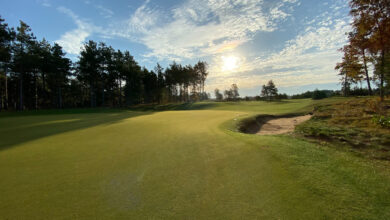In the early days of golf, courses were typically laid out on large open fields or pastures, often with little consideration for the natural landscape. The focus was on creating a challenging and interesting layout for players, rather than preserving the environment or conserving resources. The courses were typically maintained by hand, with limited equipment and tools available to groundskeepers.
As golf grew in popularity and more courses were built, there was a shift towards more naturalistic designs that incorporated the existing topography and features of the land. This trend was influenced by renowned golf course architects such as Donald Ross and Alister MacKenzie, who believed that a course should blend seamlessly with its surroundings to create a more enjoyable playing experience.
The advent of mechanized equipment in the mid-20th century revolutionized course maintenance, allowing for more efficient and precise care of the turf and landscaping. Irrigation systems, mowers, and fertilizers enabled groundskeepers to keep the courses in pristine condition year-round, and the quality of playing surfaces improved dramatically.
In recent years, there has been a growing emphasis on sustainability and environmental stewardship in the golf industry. Many courses are now implementing practices such as water conservation, integrated pest management, and native plant landscaping to reduce their impact on the environment. Some courses have even earned certification from organizations like Audubon International for their commitment to environmental protection.
Modern golf courses are designed with a focus on strategic playability, aesthetic appeal, and ecological sensitivity. Architects today work closely with environmental consultants and agronomists to create courses that are both challenging and environmentally sustainable. Features such as naturalized bunkers, native grasses, and wildlife habitats are incorporated into the design to enhance the natural beauty of the landscape and provide a more diverse playing experience.
The evolution of golf courses from simple hayfields to complex and carefully planned landscapes reflects the changing attitudes towards the game and the environment. As the sport continues to grow and evolve, we can expect to see even more advances in course design and maintenance that will benefit both players and the planet.




